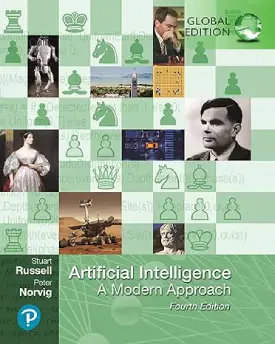Most Popular Programming Languages 2024
As of 2024, the popularity of programming languages can be assessed through various metrics such as the number of job postings, community activity, language rankings, and usage in open-source projects. Let’s explore the most popular programming languages in 2024.
Table of Contents:
1. Python
Python is a high-level, interpreted programming language known for its simplicity, readability, and versatility. It was created by Guido van Rossum and first released in 1991. Python emphasizes code readability with its use of significant indentation and clean syntax, which makes it an excellent choice for both beginners and experienced programmers. Not surprisingly, it’s the top 1 choice of the most popular programming languages in 2024.
Why choose Python?
- Readable and Maintainable Code: Firstly, Python’s syntax is clean and easy to understand, which makes the code more readable and maintainable. The use of indentation to define blocks of code enhances readability.
- Dynamically Typed: Python is dynamically typed, meaning that you don’t need to declare the type of a variable when you create one. This flexibility allows for rapid development and iteration.
- Interpreted Language: Python code executes line by line, which makes debugging and development easier because you can run parts of the program to see immediate results.
- Extensive Standard Library: Python has a rich standard library that supports many common programming tasks such as connecting to web servers, reading and modifying files, and working with data.
- Cross-Platform: Python can run on various operating systems, including Windows, macOS, and Linux, which makes it a versatile choice for developers.
- Multiple Programming Paradigms: In addition, Python supports multiple programming paradigms, including procedural, object-oriented, and functional programming styles.
- Large and Active Community: Python has a large and active community that contributes to a wealth of third-party packages and tools. This community support makes it easier to find resources, libraries, and frameworks to extend Python’s capabilities.
Applications of Python
- Web Development: Frameworks like Django and Flask allow developers to build robust web applications efficiently.
- Data Science and Machine Learning: Libraries such as Pandas, NumPy, SciPy, and TensorFlow make Python the preferred language for data analysis, scientific computing, and machine learning.
- Automation and Scripting: Python often applies in automating repetitive tasks and writing scripts to manage system operations.
- Software Development: Python is popular for building software applications, both as a primary language and as a supporting language for scripting and tooling.
- Education: Due to its simplicity and readability, Python has a wide usage as a teaching language in schools and universities.
- Game Development: Libraries like Pygame provide functionality for game development.
2. JavaScript
JavaScript is a high-level, interpreted programming language that has a wide usage in web development. Initially created by Brendan Eich at Netscape in 1995, JavaScript has evolved to become one of the core technologies of the World Wide Web, alongside HTML and CSS. Simultaneously with Python, JavaScript tops the first 3 choices of the most popular programming languages for 2024.
Why choose JavaScript?
- Interpreted Language: JavaScript code is executed by web browsers directly, without the need for prior compilation. Consequently, this allows for dynamic interaction on web pages.
- Dynamic Typing: In addition, variables in JavaScript can hold values of any type and can change type at runtime.
- Prototype-based: JavaScript uses prototypes rather than classical inheritance, which allows objects to inherit directly from other objects.
- First-class Functions: Furthermore, functions in JavaScript are treated as first-class citizens, meaning they can be assigned to variables, passed as arguments, and returned from other functions.
- Event-driven: JavaScript’s design respond to user actions and events such as mouse clicks, keyboard input, and other interactions.
Applications of JavaScript
- Client-Side Scripting: JavaScript’s primarily usage is in enhancing user interfaces and providing dynamic content on websites. It allows developers to create interactive elements such as form validations, animations, and asynchronous content updates (AJAX).
- Server-Side Development: With the introduction of Node.js, JavaScript can also apply on the server-side to build scalable network applications.
- Full Stack Development: JavaScript can apply in both front-end and back-end development, enabling full-stack development with frameworks like React, Angular, Vue.js, and server-side with Node.js.
3. Java
Java is a high-level, object-oriented programming language that is widely common for building a variety of applications. This can be from mobile apps to large-scale enterprise systems. It was originally developed by James Gosling at Sun Microsystems, which has since been acquired by Oracle Corporation.
Why choose Java?
- Object-Oriented: Java’s design surrounds around the concepts of objects and classes, hence making it easier to manage and organize code.
- Platform Independence: Java programs are compiled into bytecode, which can be executed on any device with a Java Virtual Machine (JVM). This “write once, run anywhere” capability is a major advantage.
- Robust and Secure: Java emphasizes early checking for possible errors and runtime checking, making it a reliable and secure language.
- Multi-threaded: Java supports multithreading, allowing the development of applications that can perform multiple tasks simultaneously.
- Automatic Memory Management: In addition, Java handles memory allocation and garbage collection, freeing developers from manual memory management.
- Rich Standard Library: Finally, Java provides a vast standard library that includes utilities for data structures, networking, input/output, graphical user interface (GUI) development, and more.
Applications of Java
- Enterprise Applications: Java is heavily applicable in building large-scale business applications due to its stability, scalability, and performance.
- Web Applications: With frameworks like Spring and Hibernate, Java is a popular choice for developing dynamic web applications.
- Mobile Applications: Java is the primary language for Android app development, supported by the Android SDK.
- Embedded Systems: Java is common in devices like smartphones, sensors, and other embedded systems.
- Scientific Applications: Java’s performance and extensive libraries make it suitable for scientific and research applications.
4. C#
C# (pronounced “C-sharp”) is a modern, object-oriented programming language developed by Microsoft as part of its .NET initiative. Its design is to be simple, powerful, and versatile, therefore making it suitable for a wide range of applications.
Why choose C#?
- Object-Oriented: Firstly, C# supports encapsulation, inheritance, and polymorphism, which are the fundamental principles of object-oriented programming (OOP).
- Component-Oriented: Designed for developing software components, C# promotes reuse and maintainability.
- Type-Safe: In addition, strongly typed to prevent type errors and enhance robustness.
- Scalable and Versatile: Suitable for a wide range of applications from small scripts to large enterprise systems.
- Interoperable: Easily integrates with other languages and systems, particularly those in the .NET ecosystem.
Applications of C#
- Windows Applications: Building desktop applications using Windows Forms or WPF (Windows Presentation Foundation).
- Web Applications: Developing web applications and services using ASP.NET and ASP.NET Core.
- Mobile Applications: Creating cross-platform mobile apps with Xamarin.
- Game Development: Popular in game development, especially with the Unity game engine.
- Enterprise Software: Large-scale enterprise applications, particularly those that leverage the .NET framework.

5. C/C++
C is a general-purpose, procedural programming language that was developed in the early 1970s by Dennis Ritchie at Bell Labs. It is popular for its efficiency, performance, and close-to-the-hardware capabilities. C++ is an extension of C that was developed by Bjarne Stroustrup in the early 1980s. It introduces object-oriented programming (OOP) features while maintaining compatibility with C.
Why choose C?
- Procedural Language: C follows a structured programming approach, which means it relies on procedures or routines (functions) to perform tasks.
- Low-Level Access: C provides low-level access to memory through pointers, making it highly suitable for system programming, such as writing operating systems and embedded systems.
- Standard Library: C comes with a minimal standard library. As a result, providing essential functions for tasks like input/output operations, string manipulation, and memory management.
- Portability: Code written in C can be compiled and run on various types of computers with minimal changes.
Applications of C
- Operating Systems (e.g., Unix, Linux kernel)
- Embedded Systems
- System Software
- Game Development
- Real-time Systems
Why choose C++?
- Object-Oriented Programming: Firstly, C++ supports classes and objects, allowing for encapsulation, inheritance, and polymorphism, which facilitate modular, reusable, and maintainable code.
- Standard Template Library (STL): C++ includes the STL, which provides a rich set of template classes and functions for data structures and algorithms, such as vectors, lists, queues, stacks, and more.
- Multi-Paradigm: In addition, C++ supports various programming paradigms, including procedural, object-oriented, and generic programming.
- Performance: Like C, C++ offers high performance and low-level memory manipulation, making it suitable for resource-intensive applications.
Applications of C++
- Game Development (e.g., Unreal Engine)
- Systems Programming (e.g., operating systems, device drivers)
- Application Software (e.g., desktop applications, graphics software)
- Performance-Critical Applications (e.g., real-time simulations, high-frequency trading)
6. SQL
SQL (Structured Query Language) is not a general-purpose programming language like Python or Java. Rather, it’s a specialized language used for managing and manipulating relational databases. However, it does have programming-like features for querying, updating, and managing data in databases.
Why choose SQL?
- Querying Data: SQL is used to query databases to retrieve specific information from one or more tables.
- Updating Data: Furthermore, it allows for inserting, updating, and deleting rows in a table.
- Database Schema Creation and Modification: SQL can create and modify database structures, such as tables, indexes, and views.
- Access Control: SQL can manage database access permissions and user roles.
- Declarative Nature: SQL specifies what data to retrieve rather than how to retrieve it, making it a high-level language.
- ACID Compliance: SQL databases generally follow ACID (Atomicity, Consistency, Isolation, Durability) properties to ensure reliable transactions.
- Standardization: SQL is standardized by ISO/IEC. This makes it consistent across different database systems, though implementations may have specific extensions.
Applications of SQL
- Data Retrieval and Querying: Fetching data from a database and generating reports.
- Database Management: Defining and modifying the structure of a database. In addition, managing user access and permissions.
- Financial Services: Handle and process financial transactions as well as analyse risk, perform fraud detection ,and ensure compliance with regulations.
- Real-time Systems: Real-time monitoring systems to detect anomalies, trigger alerts, and generate real-time reports.
- Marketing and Sales: Helps in managing and analysing marketing campaigns, customer segmentation, and targeting.
- Data Analysis: A foundation for data warehouses. In addition, applications in data analytics and business intelligence.
7. Go (Golang)
Go, also known as Golang, is a statically typed, compiled programming language designed by Google. It is popular for its simplicity, performance, and efficiency in concurrent programming. Golang comes as number 7 in the most popular programming languages for the year 2024.
Why choose Go?
- Simplicity and readability: Minimalistic design, with clean and straightforward syntax.
- Performance: Furthermore, being a compiled language, Go translates directly into machine code, which results in high performance.
- Concurrency: Go has built-in support for concurrent programming with goroutines and channels.
- Standard library: Go comes with a rich standard library that supports various tasks such as web development, I/O operations, and cryptography.
- Garbage collection: Includes a garbage collector which helps manage memory automatically, thus reducing the risk of memory leaks.
- Static typing and efficiency: Static typing in Go ensures type safety and improves performance and also compiles quickly, which enhances development efficiency.
- Built-in testing: Has a built-in testing framework which simplifies writing and running tests.
Applications of Go
- Web Servers and APIs: Building high-performance web servers and RESTful APIs.
- Cloud Services: Developing scalable cloud services and microservices.
- Networking Tools: Creating efficient networking tools and servers.
- Distributed Systems: Building distributed systems and applications that require efficient concurrency handling.

8. Ruby
Ruby is a high-level, interpreted programming language known for its simplicity and productivity. Designed by Yukihiro “Matz” Matsumoto and first released in 1995, Ruby emphasizes human-friendly syntax while maintaining a powerful feature set.
Why choose Ruby?
- Object-Oriented: Firstly, everything in Ruby is an object, including primitive data types.
- Dynamic Typing: Ruby uses dynamic typing and duck typing, meaning the type of a variable is interpreted at runtime and does not need to be declared explicitly.
- Garbage Collection: Automatic memory management through garbage collection helps in efficient memory use and reduces the risk of memory leaks.
- Expressive Syntax: Ruby syntax is designed to be intuitive and easy to read, often resembling plain English.
- Metaprogramming: In addition, Ruby allows metaprogramming, meaning you can write code that writes code.
- Extensive Libraries: Ruby has a rich set of libraries, known as gems.
- Web Development: Ruby on Rails, a popular web application framework written in Ruby, hence making the language a preferred choice for web development.
Applications of Ruby
- Web development: E-commerce sites, content management systems (CMS), social networking platforms, and more.
- DevOps and Automation: Infrastructure as code (IaC), automated server setup, configuration management, and continuous deployment.
- Data Processing and Analysis: Web scraping, data transformation, report generation, and data visualization.
- Scripting an Automation: File manipulation, system administration tasks, and batch processing
- Testing and Quality Assurance: Unit testing, integration testing, acceptance testing, and automated browser testing.
- Game Development: 2D games, educational games, and indie game projects.
9. PHP
PHP (Hypertext Preprocessor) is a widely-used, open-source scripting language designed specifically for web development. A powerful and versatile language, suitable for a wide range of web development tasks. Its ease of use and extensive community support make it an excellent choice for both beginners and experienced developers.
Why choose PHP?
- Server-Side Scripting: PHP scripts are executed on the server, and the result is sent to the client as plain HTML.
- Cross-Platform: PHP runs on various platforms (Windows, Linux, Unix, macOS), and it is compatible with most web servers (Apache, IIS, etc.).
- Embedded: Furthermore, PHP code can be embedded directly into HTML, making it easy to add dynamic content to web pages.
- Extensive Database Support: PHP supports a wide range of databases, including MySQL, PostgreSQL, SQLite, and many more.
- Flexibility: PHP is highly flexible and can be integrated with various web technologies like JavaScript, XML, and JSON.
- Open Source: In addition, PHP is free to use and distribute, and it has a large community that contributes to its development and support.
- Strong Community and Documentation: Extensive documentation and a large user community make it easy to find help and resources.
Applications of PHP
- Dynamic Web Pages: Creating dynamic content that interacts with databases and forms.
- Web Applications: Building full-featured web applications like content management systems (CMS), e-commerce platforms, and social networks.
- APIs: Developing RESTful and SOAP APIs for web services.
- Command Line Scripting: PHP can apply in scripts run on the command line for tasks like file processing and automated workflows.
10. Swift
Swift is a powerful and intuitive programming language developed by Apple for building apps for iOS, macOS, watchOS, tvOS, and beyond. Its introduction was in 2014 and has since become a popular language for Apple ecosystem development due to its performance, safety, and modern syntax. Swift comes as number 10 in the most popular programming languages in 2024.
Why choose Swift?
- Safety: Swift eliminates entire classes of unsafe code. Variables are always initialized before use, arrays and integers are checked for overflow, and memory is managed automatically.
- Performance: Swift is designed to be fast. It uses high-performance LLVM compiler technology and has an optimization for performance without sacrificing readability.
- Modern Syntax: Swift’s syntax is concise yet expressive, and it includes modern features such as closures, generics, and type inference.
- Interoperability: Swift is fully interoperable with Objective-C. You can use both languages in the same project and take advantage of the existing Cocoa and Cocoa Touch frameworks.
- Dynamic Libraries: Swift uses dynamic libraries, which can be linked and included in apps. As a result, this allows for app binaries to be smaller and improves load times.
- Playgrounds: Finally, Swift Playgrounds are an innovative tool that allows developers to experiment with Swift code and see the results immediately. Therefore, making learning Swift interactive and fun.
Applications of Swift
- iOS and macOS App Development
- WatchOS and tvOS Development
- Server-Side Development
- Cross-Platform Development
- Game Development
- Embedded Systems and IoT
- Scripting and Automation
- Machine Learning and Data Science
Other Noteworthy Languages
Although the following programming languages do not top the 10 most popular choices in 2024, they are still worth mentioning.
- R: Popular in statistics and data analysis.
- Kotlin: Gaining traction in Android development as a modern alternative to Java.
- TypeScript: Superset of JavaScript that adds static types, increasingly popular in web development.
In a nutshell
The most popular programming languages in 2024 reflect a mix of languages used for web development, enterprise solutions, mobile development, and systems programming. Python and JavaScript continue to dominate due to their versatility and strong community support, while languages like Go and Kotlin are growing in popularity for specific use cases.





